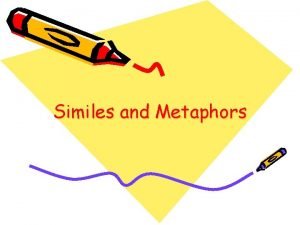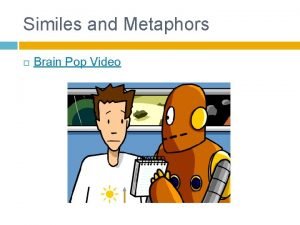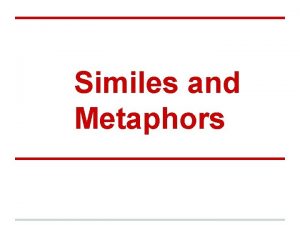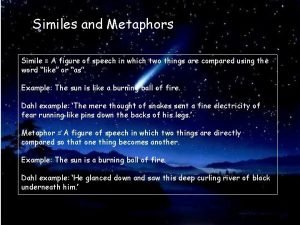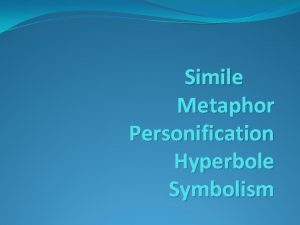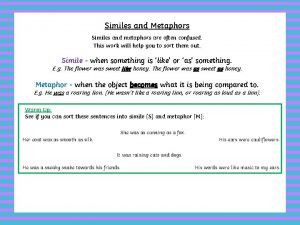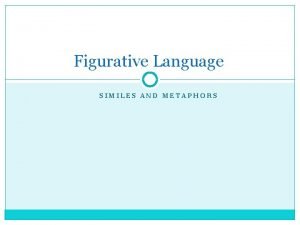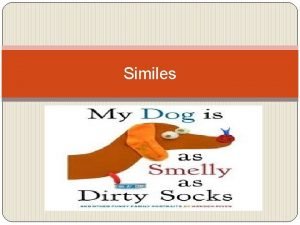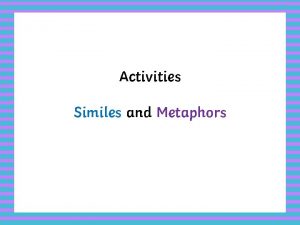Similes and Metaphors Simile A figure of speech







- Slides: 7

Similes and Metaphors Simile = A figure of speech in which two things are compared using the word “like” or “as”. Example: The sun is like a burning ball of fire. Dahl example: ‘The mere thought of snakes sent a fine electricity of fear running like pins down the backs of his legs. ’ Metaphor = A figure of speech in which two things are directly compared so that one thing becomes another. Example: The sun is a burning ball of fire. Dahl example: ‘He glanced down and saw this deep curling river of black underneath him. ’

In pairs/ threes, try to come up with the best simile/ metaphor for each of the emotions we looked at in the table yesterday. Example – Fear: The terror in his eyes was as visible as … The terror in his eyes was like … His eyes were electrified with terror. • Fear • Jealousy • Pride • Exhaustion • Despair • Excitement

Taking the photograph of your chosen setting. What feelings can you associate with that setting? Consider the example below. The Main Hall Feelings Physical symptoms ‘Show’ not ‘Tell’ sentence Tiredness Yawning, heavy eyes The unfortunate rhythm of the teacher’s voice begins to send me silently to sleep. Eyes drooping as if taunting the Prefects to isolate my insolence. Joy Smiling, … Graduation… Intimidation Rigid, wide eyes, … The very first day of school…

Challenge yourself to include some or all of the following: • Simile • Metaphor • Link ideas to colour – Example for the school bus: Example: The blue seats of the bus become a tranquil ocean of calm to end my busy day. • ENSURE you ‘SHOW’ rather than ‘TELL’

Your setting Feelings Physical symptoms ‘Show’ not ‘Tell’ sentence

Self differentiate by deciding your starting point: 1. Begin by ‘telling’ the reader of your emotion The girl was tired 2. Include physical symptoms The girl yawned, with heavy eyes, because she was tired. 3. ‘Show’ using features of your setting’s context: The unfortunate rhythm of the teacher’s voice begins to send me silently to sleep. Eyes drooping as if taunting the Prefects to isolate my insolence. 4. Try adding colour to your sentences: The darkness waiting from behind my eyelids offers a welcomed release from the unfortunate rhythm of the teacher’s voice…

Review What have I learnt today? Why have I learnt it? How can I use what I have learnt in the future? What ATL skills have I used today?
